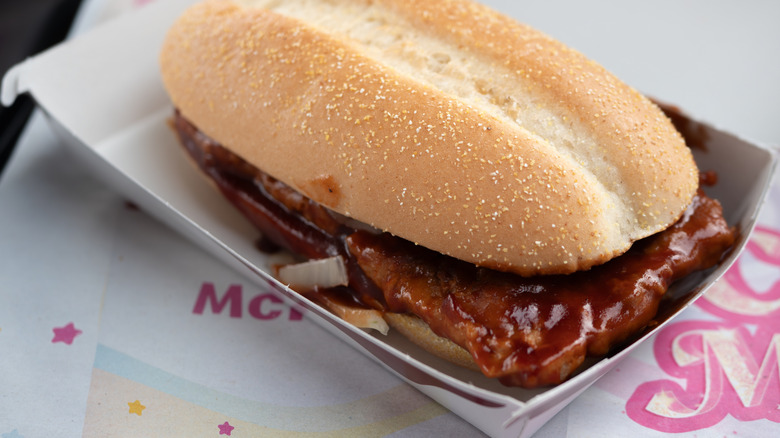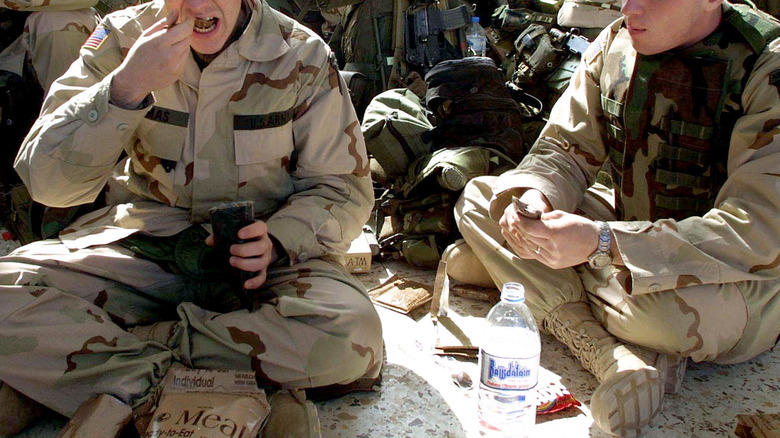How US Army Technology Led McDonald's To Create The McRib
Whether you can't wait for its annual appearance or consider it some sort of frankenmeat, McDonald's McRib is none-the-less a unique sandwich that can't help but spark a social media frenzy upon its yearly return to the fast food giant's menu. Its history, like the sandwich's shape and ingredients, is a bit enigmatic. The meat is made to resemble a rack of ribs, although it's actually made of seasoned boneless pork shoulder, slathered with BBQ sauce, and served on a bun with pickles and onions.
As with the confusing history of McDonald's Happy Meal, which includes several potential creators, the invention of the McRib seems to have had a few hands who helped shape it into its final form. But at the heart of its creation lies the U.S. Army and a program meant to figure out how to make unpalatable looking pieces of meat appear more appetizing for its soldiers. Back in the 1960s, food scientist John Secrist worked at the U.S. Army Natick Soldier Research, Development and Engineering Center (now the Combat Capabilities Development Command Soldier Center) in Natick, Massachusetts. He and his team began developing what came to be called restructured meat. If you find the term unappetizing, just wait.
From Army rations to the McRib sandwich
The U.S. Army hoped to find a way to cut food costs and John Secrist and others at the Center, working with an Ohio company called Bettcher Industries, which made flaking machines, found a way. They took the odds and ends of slaughtered animals, like organs, viscera, and meat scraped from bones, flaked it, and added salt. After that, they tumbled the meat so that it produced a glue-like substance that kept it together and then added fat for flavor and sodium phosphate for juiciness. Now they were able to shape this restructured meat into whatever form they desired.
By the 1970s, the Army had created restructured meat in the shape of lamb and pork chops, and beef and veal steaks. "And McDonald's McRib is as close to our product as you can get," Secrist told author Anastacia Marx de Salcedo for her book "Combat-Ready Kitchen: How the U.S. Military Shapes the Way You Eat." The next step to the birth of the McRib came from Roger Mandigo, a University of Nebraska animal science professor, who worked with the National Pork Producers Council to develop the McRib from flaked pork shoulder, which actually started out shaped like a pork chop before McDonald's stepped in and asked for its now iconic form. From there, McDonald's Chef Rene Arend crafted the final version of the sandwich that by 1982 was being sold nationwide and is now back for a limited time.

